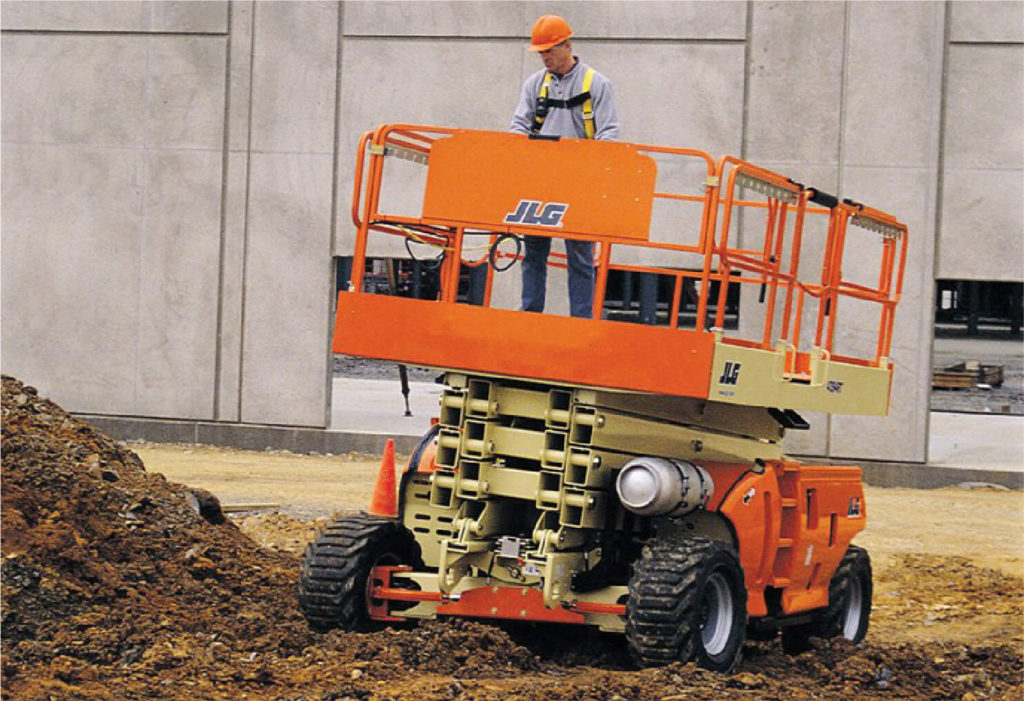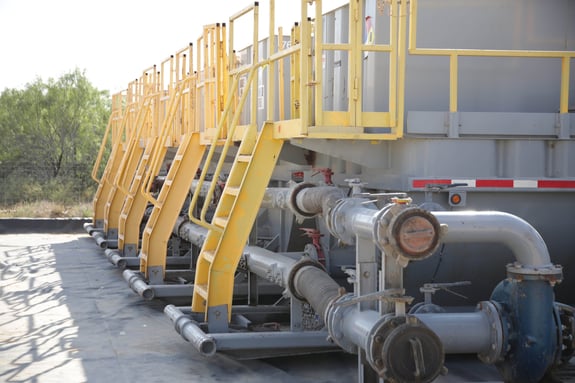Superior rentals squeeze tools: common mistakes to avoid
A Comprehensive Guide to the Various Types of Oil Field Equipment and Pipeline Equipment Available
The oil and gas market relies heavily on specialized tools for efficient extraction and transport. Numerous sorts of equipment, from piercing rigs to tank, play essential functions in this intricate process. Each piece of tools serves unique functions that add to general functional success. Understanding these components is essential for any individual associated with the field. As the sector evolves, so also do the modern technologies that sustain it. What developments are on the horizon?

Drilling Rigs: The Backbone of Oil Expedition
Drilling rigs function as the important machinery in the domain of oil exploration, enabling firms to access hydrocarbon reserves buried deep below the Planet's surface. These rigs can be found in different types, consisting of land rigs, offshore rigs, and mobile devices, each made to run in details environments. Geared up with sophisticated technology, drilling rigs can penetrate geological developments with accuracy, ensuring reliable source removal. The structural honesty and operational abilities of these rigs are vital, as they should stand up to extreme problems and substantial stress. The option of a drilling gear influences the general job cost and timeline, making it an important consideration for oil firms looking for to enhance their exploration efforts and optimize performance in their procedures.
Pumps: Essential for Liquid Movement
In the oil extraction procedure, the duty of pumps is considerable, promoting the movement of fluids throughout various stages of production. Pumps are important for carrying unrefined oil, water, and various other liquids from below ground storage tanks to the surface area and afterwards with pipes to refineries. They are available in various kinds, consisting of centrifugal, favorable displacement, and completely submersible pumps, each serving certain objectives based on the fluid qualities and operational needs. Centrifugal pumps are frequently utilized for their performance in high-flow applications, while favorable displacement pumps stand out in dealing with viscous fluids. The choice of pump impacts overall efficiency, functional safety and security, and upkeep prices. Appropriate choice and maintenance of pumps are vital for enhancing production and decreasing downtime in oil area operations.
Shutoffs: Controlling Circulation and Pressure

Valves play a vital function in handling the flow and stress of liquids within oil areas and pipes. Different sorts of shutoffs serve unique applications, each developed to accomplish details functions essential for effective procedure - Superior Rentals fusion machines. Recognizing the characteristics and usages of these valves is vital for maximizing system performance and safety
Sorts of Valves
Crucial elements in oil field operations, shutoffs play a crucial function in controlling the flow and pressure of fluids within pipes and devices. Various types of shutoffs are utilized to meet the varied requirements of oil and gas production. Common types consist of gate valves, which supply a straight-line flow and marginal pressure decline; globe valves, understood for their strangling abilities; and sphere shutoffs, identified for their fast on/off control. In addition, check valves protect against heartburn, while butterfly shutoffs offer a light-weight solution for managing flow. Each valve type is developed with certain materials and setups to stand up to the extreme conditions typically found in oil fields, ensuring dependability and efficiency in procedures. Comprehending these kinds is critical for effective system monitoring.
Valve Applications and Functions
While numerous kinds of valves serve distinctive functions, their primary applications focus on managing circulation and pressure within oil and gas systems. Shutoffs such as entrance, globe, and round valves regulate fluid motion, ensuring peak efficiency and safety. Gateway shutoffs are commonly utilized for on/off control, offering marginal circulation resistance. World shutoffs, on the other hand, deal precise flow regulation, making them suitable for throttling applications. Sphere shutoffs are favored for their fast operation and limited sealing abilities. Additionally, pressure safety valve are crucial for protecting against system overpressure, securing tools stability. On the whole, the proper choice and application of shutoffs improve functional performance, making sure the reputable transport of oil and gas via pipes and handling facilities.
Compressors: Enhancing Gas Transportation
Compressors play a critical function in the effective transportation of gas, guaranteeing that it relocates smoothly with pipes over long ranges. These gadgets raise the stress of all-natural gas, enabling it to get rid of friction and altitude adjustments within the pipeline system. Furthermore, compressors assist in the balancing of supply and demand, fitting changes in intake and manufacturing rates. Various kinds of compressors are employed in the sector, including centrifugal, reciprocating, and rotary screw compressors, each offering distinctive benefits based on the functional needs. Routine maintenance of these compressors is vital to make best use of efficiency and lessen downtime, ultimately adding to a trustworthy gas transport network. Their essential function emphasizes the value of compressors in the total oil and gas facilities.
Storage Tanks: Safe and Efficient Liquid Monitoring
Reliable transportation of all-natural gas depends on numerous sustaining systems, among which is the correct monitoring of tank. These tanks play a crucial duty in securely consisting of liquids, making certain that functional efficiency is maintained while minimizing ecological risks. Built from durable products, they are made to withstand high pressures and corrosive elements. Appropriately sized and tactically situated, storage containers assist in the smooth flow of natural gas and various other fluids, preventing traffic jams in supply chains. Normal upkeep and tracking are crucial to discover leaks or architectural problems, promoting safety and security and conformity with governing standards. Ultimately, the effective administration of storage space containers is vital for the general stability and integrity of the oil and gas market's fluid handling systems.
Pipeline Equipments: Facilities for Transportation
Pipeline systems work as the backbone of the oil and gas sector, promoting the reliable transportation of hydrocarbons over vast distances. These systems include numerous elements, including pipelines, shutoffs, pumps, and compressors, all thoroughly made to ensure smooth circulation. The materials made use of in pipeline construction, usually steel or high-density polyethylene, are picked for resilience and resistance to deterioration. Pipeline networks can cover throughout land and water, linking manufacturing websites to refineries and distribution centers. Additionally, advanced innovation enables real-time surveillance of circulation more information prices and stress levels, enhancing operational efficiency. The strategic positioning of these pipelines decreases environmental effect while making best use of source availability, consequently playing an essential role in conference power needs worldwide.
Safety And Security Equipment: Making Certain Employee and Environmental Defense
The operation of pipeline systems, while crucial for energy transport, likewise provides considerable safety obstacles for workers and the environment. Security devices plays a significant duty in minimizing these dangers. Personal safety equipment (PPE) such as headgears, handwear covers, and non-slip footwear safeguards employees from physical risks. In addition, gas discovery systems check for leaks, making sure that hazardous compounds do not posture a danger to personnel or the surrounding ecological community. Emergency closure systems are crucial for quickly stopping operations throughout a dilemma, preventing potential disasters. Spill control materials, consisting of absorbents and obstacles, are essential Resources for decreasing ecological impact. In general, purchasing comprehensive safety and security tools is vital for preserving functional stability and securing both workers and the atmosphere in the oil and gas industry.

Often Asked Concerns
How Do I Select the Right Oil Field Equipment for My Task?
Selecting the best oil area devices includes assessing job specs, budget plan constraints, and functional demands. Think about aspects such as devices reliability, compatibility with existing systems, and the distributor's online reputation to assure peak performance and safety.
What Are the Upkeep Needs for Oil Field Equipment?
Maintenance requirements cheap backhoe for sale for oil area devices include normal evaluations, lubrication, and timely fixings. Operators ought to likewise abide by maker standards, screen efficiency metrics, and assurance conformity with security guidelines to boost longevity and efficiency.

Just How Can I Make Sure Compliance With Environmental Laws?
To guarantee conformity with environmental guidelines, business must carry out regular audits, carry out best methods, buy training, preserve correct documentation, and remain updated on regulations (Superior Oilfield Rentals). Cooperation with environmental companies can additionally enhance adherence to guidelines
What Is the Average Life Expectancy of Pipeline Equipment?
The typical life expectancy of pipeline tools usually varies from 20 to half a century, depending upon factors such as material top quality, environmental conditions, and upkeep techniques. Normal examinations can substantially influence long life and functional effectiveness.
How Do I Safely Transfer Oil Field Equipment to Remote Locations?
Moving oil area equipment to remote places needs careful preparation, consisting of path assessment, securing permits, utilizing proper automobiles, and making certain safety and security protocols are followed. Appropriate training and communication among teams are necessary for effective transport.